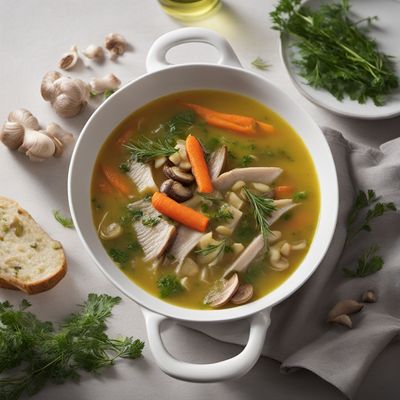
Ingredient
Freshwater fish
Aquatic Delights
Freshwater fish come in a wide variety of species, each with its own unique characteristics. They can range from mild and delicate to rich and flavorful. The texture of freshwater fish is often tender and flaky, making it suitable for different cooking methods such as baking, grilling, or pan-frying. In appearance, freshwater fish can have different colors and patterns, depending on the species.
Origins and history
Freshwater fish have been a staple in the diets of many cultures throughout history. They are commonly found in rivers, lakes, and ponds, providing a valuable source of protein and nutrients. In some regions, freshwater fish are considered a traditional and cultural food, often prepared in special ways or for specific occasions.
Nutritional information
Freshwater fish are a good source of lean protein, omega-3 fatty acids, vitamins, and minerals. They are also low in saturated fat and calories, making them a healthy choice for those looking to maintain a balanced diet. The nutritional content can vary depending on the species and preparation method.
Allergens
Some individuals may be allergic to freshwater fish, particularly those with seafood allergies. It is important to exercise caution and consult a healthcare professional if you have any concerns.
How to select
When selecting freshwater fish, look for clear and bright eyes, shiny and moist skin, and a fresh, mild odor. The flesh should be firm and spring back when touched. Avoid any fish that has a strong fishy smell, discolored flesh, or signs of spoilage like sliminess or mold.
Storage recommendations
To maintain freshness, freshwater fish should be stored in the refrigerator at a temperature below 40°F (4°C). It is best to consume it within 1-2 days of purchase. If freezing, wrap the fish tightly in plastic wrap or place it in an airtight container to prevent freezer burn.
How to produce
Freshwater fish can be produced through aquaculture or fish farming. It involves raising fish in controlled environments such as ponds or tanks. However, due to the specialized knowledge and equipment required, it is recommended to leave fish production to experts and professionals.
Preparation tips
Freshwater fish can be prepared in various ways, depending on the species and personal preference. They can be baked, grilled, pan-fried, or steamed. Freshwater fish pairs well with flavors like lemon, dill, garlic, and herbs. It is often served as a main course or used in dishes like fish tacos, fish curry, or fish chowder.
Culinary uses
Freshwater fish are commonly used in various cuisines around the world. They can be found in dishes like fish and chips, fish curry, fish tacos, or fish chowder. They are also used in sushi and sashimi preparations. Each culture has its own unique recipes and cooking methods for freshwater fish.
Availability
Freshwater fish are commonly available in regions with access to rivers, lakes, and ponds. They can be found in countries like the United States, Canada, Brazil, Thailand, and Nigeria.
More ingredients from this category
Recipes using Freshwater fish » Browse all

Sami-Inspired Arctic Chaat
Arctic Fusion: A Sami Twist on Indian Chaat

Spicy Fish Stew with Hubei Flavors
Fiery Hubei Fish Stew: A Spicy Delight from the Heart of China

Silesian Bullinada
Hearty Silesian Fish Stew

Missoltini alla Lariana
Lake-inspired Crispy Fish Delight

Haltepertő - Alpine Style Fish Soup
Alpine Delight: Hearty Fish Soup with a Hungarian Twist

Hungarian-style Bouillabaisse
Magyar Fisherman's Stew: A Hungarian Twist on Bouillabaisse

Hungarian Fisherman's Soup
Savor the Flavors of the Danube: Hungarian Fisherman's Delight

Guizhou-style Spicy Fish Soup
Fiery Fish Delight: Guizhou's Spicy Soup Sensation

Russian Fish Soup - Ukha
Savor the Flavors of the Sea with Russian Fish Soup - Ukha

Bosnian-style Spicy Fish Soup
Sarajevo's Fiery Fish Delight

Midwestern Fish Stew
Lake-inspired Fish Stew: A Taste of the Midwest

Pôchouse à la Bourguignonne
Burgundy Fish Stew: A Delightful French Seafood Medley